Running A Flint & Feather Narrative Campaign – Part One
January 22, 2019 by crew
FLINT & FEATHER is the new tabletop skirmish miniatures game created and published by Crucible Crush Games.
The game is set in the legendary tribal era of the Great Lakes region of North America. In the game, you portray a Great Warrior and lead your Warband to fame and glory, called Orenda. In these articles, we will attempt to explain how to play a narrative campaign using the rules provided in the game.
There are two great nations in this era that were locked in an epic conflict. In the Georgian Bay region of Ontario was the Wendat Confederation, now known to us as the Huron. The Wendat were a great trading nation and controlled crucial transit points that were vital to North American trade. The Haudenosaunee, or Iroquois Federation of five nations, controlled the territory of what is now much of New York State. Both groups shared a similar culture and both exerted significant influence upon the neighbouring tribes on their borders.
Warfare between tribes in this period was not for territorial gain as much as it was a reciprocal blood-feud. The Flint & Feathers game tries to capture the heroic nature of these battles, both great and small. Great Warriors need to inspire their followers, not command them. They must seek glory and success by being both brave and clever or upon returning home they will face the condemnation of the chief and the women of the village who were, indeed, the real brokers of power. Great Warriors seek to return with captives to replace previously lost members of the tribe.
They seek to return with the enemy’s property to distribute to their friends and family. Most of all, they dream of returning with tales of valour and wonder to tell around the longhouse fires during the long winter nights!
We have also focused on elements of the mythological nature of the First Nations traditions in our game. You can add this element to your campaign thru the use of Shamans who make use of ritual magic to influence our tabletop games.
There are also mythological creatures like the Flying Head, a large figure that flies through the air, pursuing humans to devour or the Naked Bear an enormous man-eating bear with no fur and an oversized head.
Finally, the system makes use of Medicine Cards to add elements of the period, either real, like weather changes, or mythical like the appearance of the Stiff-Legged Bear, more commonly known as the Woolly Mammoth to the game.
Although we provide a fluid campaign system in the rulebook this article will focus on using this campaign system to create a narrative Flint & Feather campaign for you and your group. Narrative campaigning provides the players with a storyline that links the battles you play.
In many games, narrative campaigns are normally engaged in by two opposing forces or players. Due to the open style of campaigning in the Flint & Feather period and the flexibility of the rules we believe the rules system can be used to effectively create a narrative among your players. You will find grudge matches materialising, stories being shared and even individual characters that emerge as the figures grow and change using the experience system provided in the rules.
Where To Start
The basic game of Flint & Feather provides a point system that players can use to create equal-sized starting Warbands for use in open play tabletop games if they wish. This system also allows players to plan scenarios where forces may or may not be of equivalent sizes. Our rulebook provides both of these types of scenarios so the players can easily suit up for a game. However, this system is not used in the Campaign Game.
Red Bear and his Companion White Feathers along with three Striplings from the Huron tribe
Players can be, and often are, guiding forces of varying sizes for campaign game tabletop battles. This system once again tries to simulate the historical references from the period and again provides a narrative for the players to work with in terms of creating legendary stories. This being said, the points system is used in some of the campaign scenarios to determine a winner, so it is not completely ignored. We find this system brings a blend of gaming styles together and strengthens the ruleset.
In the Campaign Game, you start with a Great Warrior, Companion and three Striplings. The Great Warrior is obviously your favourite figure and represents you on the tabletop. The Companion is his friend and running mate. They may be related or they are at least in the same group of youths that grew up around the cooking fires together. Finally, the three Striplings represent the future of your Warband.
Cloud Elk and his Companion Red Bird along with three Striplings from the Algonquin tribe
These are the figures that will benefit most from experience and training and they will move up the ladder to become Warbearers and later Veteran Warriors and Companions, or alternatively, they can become Shamans and Healers for your Warband. This doesn’t mean that you will not ever have access to these Key Characters unless you build them but it does mean that these figures will become Special Characters in your Warband. You should fill out a Warband Record Sheet with your Great Warrior, Companion and three Striplings on it. This will represent your starting Warband for the Campaign.
Special Vs Key
A side note should be made here. Key Characters are defined in the basic rules as Great Warriors, Companions, Shamans and Healers. These are the four types of Key Characters and they have special effects in the game. They get to choose Combat Cards rather than take them at random. They also get Abilities which make them a little tougher than the Basic Characters. Basic Characters are the Veteran Warrior, Warbearer and Stripling.
Although varying in level and importance these figures have to choose Combat Cards at random and have no Abilities, except for the Veteran Warrior who gets one ability at random. It is important to note that Special Characters play a more significant role in the Campaign Game.
A Special Character is one that has started as a Stripling and, thru promotion, has graduated to the standing of Warbearer, Shaman or Healer. Also, your Great Warrior and Companion would fall into this group of figures as well. These figures are important in the Campaign Game because they are the only ones that can have extra equipment or abilities given to them. They also get to choose their card in Close Combat rather than taking one at random. This is also the only way that a Warbearer may earn an ability. They are exciting figures because they provide growth in your Warband and their exploits can also become an important aspect of the narrative campaign.
A Stripling must choose its path, Warbearer, Shaman or Healer before any promotion die rolls are made and then stay on that path throughout their career. Of course, after being involved in three tabletop games the Stripling will automatically get promoted; we all grow up sometime. Finally, any Striplings that are killed or that get promoted are replaced in your Warband and the growing process continues. In this way, in the later stages of the campaign, you will have many Special Characters available to you to put into your Warband in order to get a customized look to your tabletop army. Of course, you may not be able to afford them all in any one given tabletop battle.
Your Campaign Warband
The Warband Size Chart on page 62 in the rulebook shows us how to generate our random Warband. It was a tradition within these tribes that the leader of any hunting expedition or battle party would speak before the tribe, telling of his battle honours, cajoling friends to join him and even promising furs to warriors to get them to undertake this journey with him.
The warriors of the tribe would then have their own decision to make in terms of joining the Great Warrior or turning him down. Each turn a player that is going to fight a Tabletop Battle will roll on this chart to determine what warriors from the tribe join him. How successful he was on the previous turn, any injuries, or what is happening at the time in the campaign can all affect how many dice are rolled. How good the dice roll determines what type and how many warriors will join him.
For example, a roll of 19 thru 21 (an average roll with 5d6 which is a usual starting number of dice) nets the Great Warrior five Warbearers and one Special Character, a reasonably effective speech was made. We would not keep track of the Warbearers (consider them like redshirts, pretty interchangeable with lots of other warriors from the tribe). A player may use one of his Special Characters or you can always replace a Special Character for a Veteran Warrior for free (once again a randomly generated disposable Veteran Warrior, created as per the Warband Creation rules).
Thus this Great Warrior, who rolled a total of 20, would have a Warband of himself, his Companion, three Striplings, a Veteran Warrior and five Warbearers. This would be a good size force for a tabletop battle in Flint & Feather. Of course, his dice roll and Warband composition may be completely different next turn, except for his starting five warriors.
The rules and the chart allow you to set aside dice (called War! Dice) and if you are interested in a prechosen Warband. It has not occurred yet but you could actually set aside all your War! Dice, trading them for Special and Key Characters and come up with a pretty customized if smaller Warband if that fit into your plan. For each War! Dice you set aside you can take one Key Character of your choice or up to two Special Characters. This would be instead of rolling on the Warband Size Table.
I have added the chart below so you can see your possible outcomes. Once again, on this chart, if you roll a Key Character you can make a random Key Character from the tribe or you can use one of your own Key Characters. For instance, a Stripling that has been promoted to Shaman may be used as a Key Character. Also, he counts as a Special Character if needed as called for by rolling it on the chart. As the game progresses you will have more flexibility in terms of determining which figures make up your Warband.
Warband Size Table - Roll & Add To Your Warband
- 1-3 3 War-bearers
- 4-6 4 War-bearers
- 7-10 5 War-bearers
- 11-13 4 War-bearers plus choice of one Special Character
- 14-18 6 War-bearers
- 19-21 5 War-bearers plus choice of one Special Character
- 22-24 4 War-bearers plus choice of one Special and one Key Character
- 25-27 7 War-bearers
- 28-30 4 War-bearers plus choice of two Special and one Key Character
- 31-33 5 War-bearers plus choice of one Special and one Key Character
- 34-36 4 War-bearers plus choice of two Special and two Key Characters
- 37-40 5 War-bearers plus choice of one Special and two Key Characters
- 40-48 5 War-bearers plus choice of two Special and two Key Characters
- 49-56 6 War-bearers plus choice of one Special and two Key Characters
- 57+ 7 War-bearers plus choice of one Special and two Key Characters
We believe that all this flexibility allows you to come up with a distinctive narrative to the story of your Great Warrior and the Warband that he leads into the tabletop battle. You will also have to give consideration to which warriors you have available.
Injuries can also play a role in the narrative as Special and Key Characters get injured and need to be replaced or other warriors are promoted and take their place. The Warband creation part of each turn allows the players to generate their own narrative and tell the unique story of their personal Great Warrior.
Make sure to come back for Part Two of this series where we'll be looking at narrative campaigns in more detail...
By Lee VanSchaik
"You will find grudge matches materialising, stories being shared and even individual characters that emerge as the figures grow and change using the experience system provided in the rules..."
Supported by (Turn Off)
Supported by (Turn Off)
"The Warband creation part of each turn allows the players to generate their own narrative and tell the unique story of their personal Great Warrior...."
Supported by (Turn Off)










































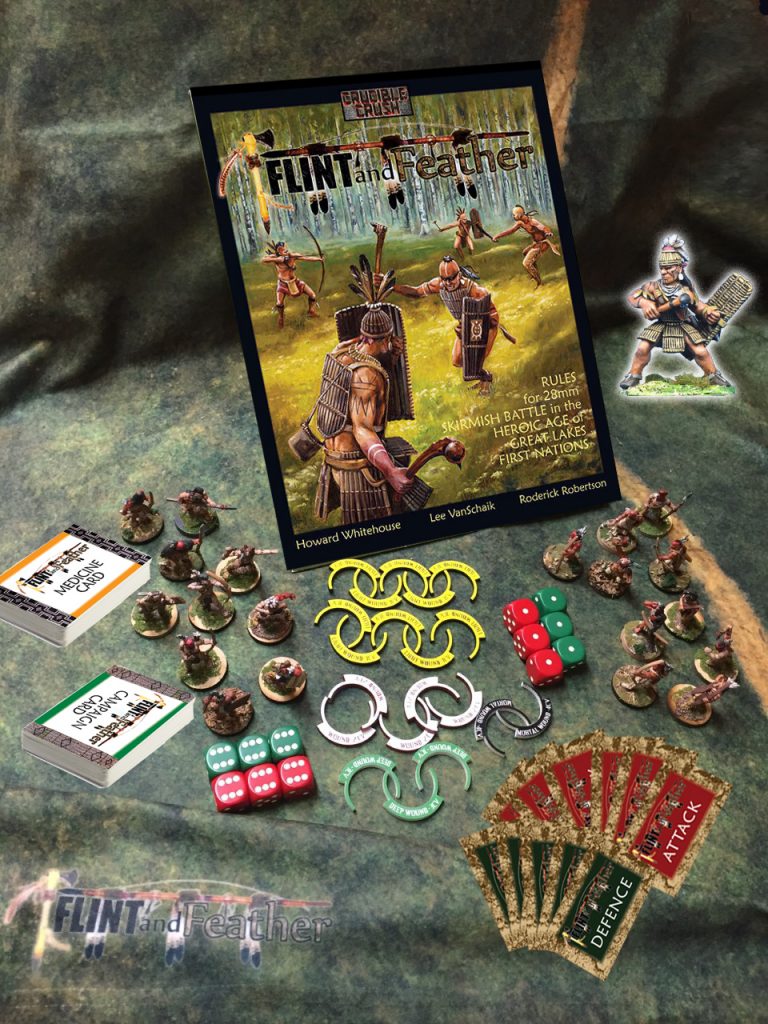

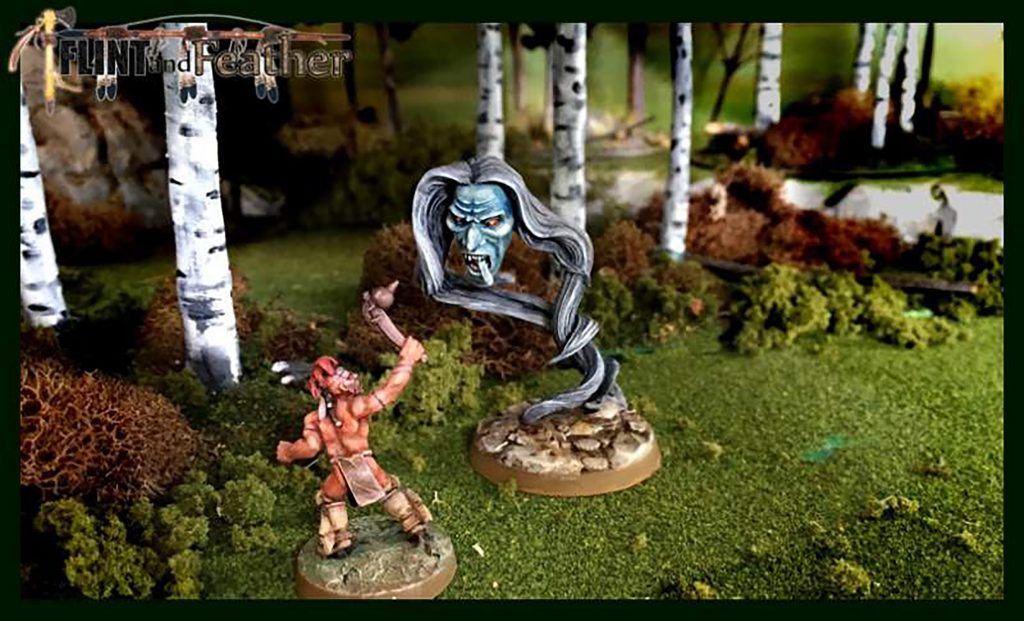
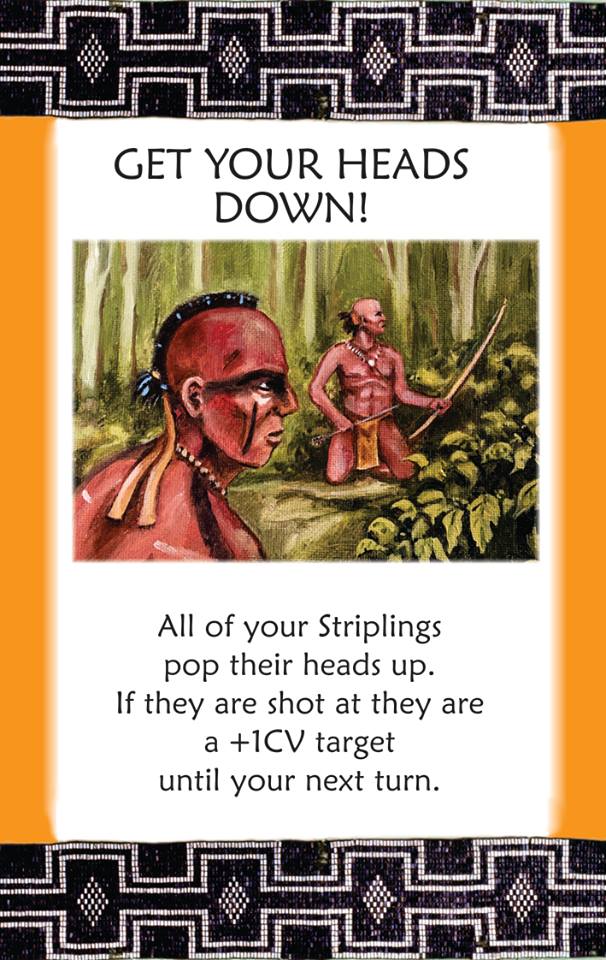

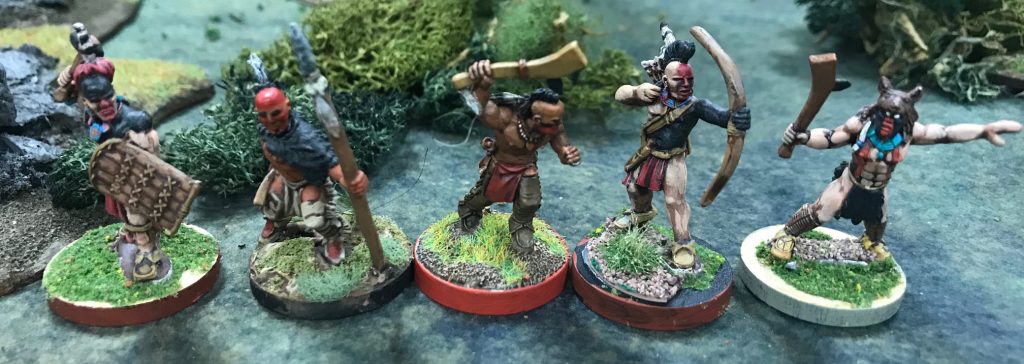

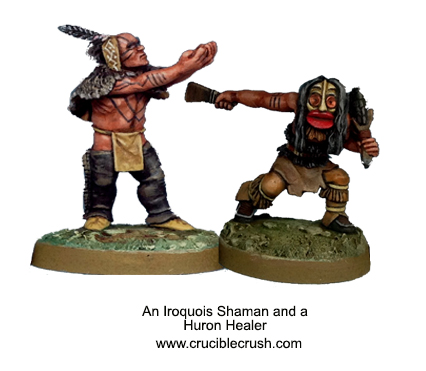
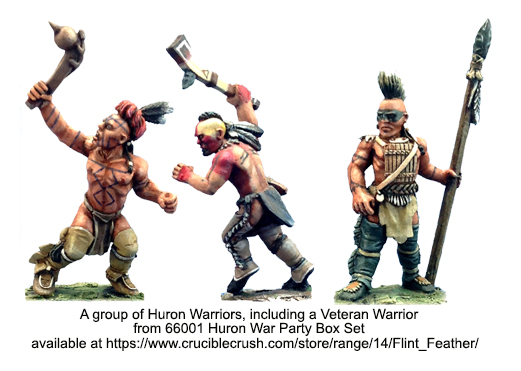




































nice looking figures.
Interesting article. I backed this KS but forgot to update my backer kit and pay postage. You have reminded me to do so, I have now contacted Crucible Crush and will be paying and adding to my initial order end of this week.
I see a new projecy coming on….
This looks very interesting. I’ll have to pick up some earlier American Indians than what I already have.
I really like gang/Warband level games where you can name your minis and really tell a detailed story.